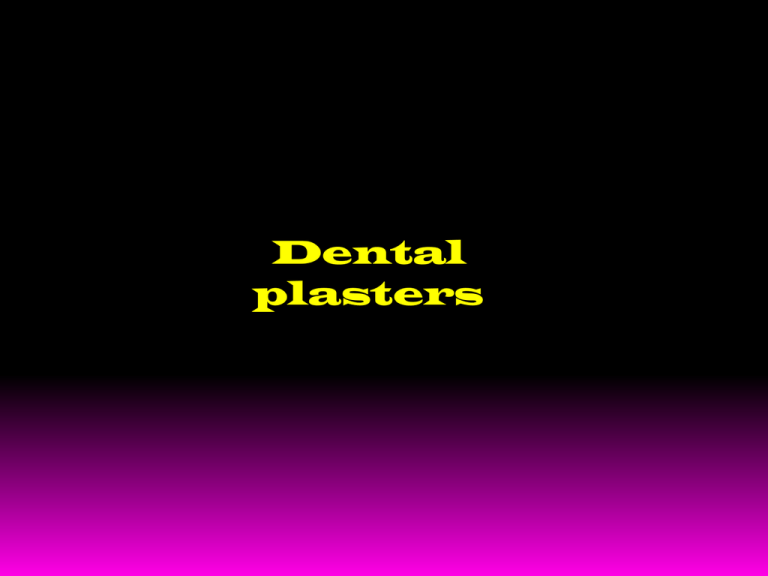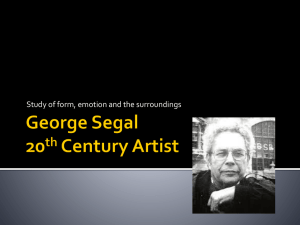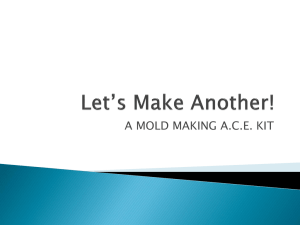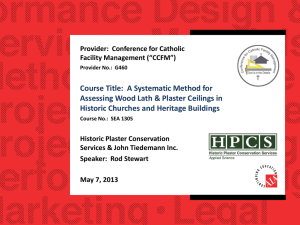plaster of Paris - TOP Recommended Websites
advertisement

Dental plasters Introduction: - dental plaster is used from any thousands years - as first plaster was used for dental practice the gypsum plaster or „plaster of Paris“ ( the name is from period of renaissance Renaissance - the period of European history at the close of the Middle Ages and the rise of the modern world "a cultural rebirth from the 14th through the middle of the 17th centuries“) - it was the better plaster for works of art Chemical composition: - from chemical view has a plaster simly composition: - it is a beta polyhydrate of gypsum: CaSO4 . 1/2H2 O - it is produced by the process of dehydration of gypsum - chemical reaction is following CaSO4 .2H2 O CaSO4 . 1/2H2 O + 1/2H2 O - the gypsum is common white or colorless mineral used to make cements and plasters, especially plaster of Paris - from chemical view can be divided : 1. plaster of Paris ( soft plaster) 2. hydrocal plaster ( hard plaster) 3. densite plaster ( super hard plaster) Plaster of Paris – general information: - it is the basic type of plaster, which is important for making other types plasters - the chemical base is the dehydrating of gypsum and so create the beta polyhydrate - this anhydric type is adapted plaster of paris for dental use - the dehydration is by the teperature about 130°C - after it, the beta polyhydrate is beating and separating - for the adaptation of feeding speed is added the regulators of fedding Hydrocal plaster (alfa plaster) – chemical characteristic: - this type of plaster creates by the vulcanisation at the high temperature and at the high atmospheric pressure - the base of this plaster is the alfa polyhydrate - this plaster is more hardness than plaster of paris - chemical and physical properties are similar, but atomic lattice is different - the beta plaster has a high porosity, but hydrocal plaster has nonporosity crystals Hydrocal plaster (alfa plaster) – physical properties: - the mixing rate is V/P 30-60 ml water for 100g plaster - in prosthetic is used for producing of models - these models are easy to produce, they stiffen with optimal speed ( no quickly,no slowly), they have a good duplicating ability and volume stability Hydrocal plaster contain after dehydrating: - 95-98 alfa polyhydrate of gypsum - rest is insoluble mineral ingredients Densite plaster ( superhard) : - it is produced from the hydrocal plaster by the high temperature 115°C-130°C and high pressure - or it is producwd by the temoerature 115°C and atmospheric pressure in solution of calcium chloratum with ingredients of mineralisating (mineralisators) - they are alcalic citran and maeinat, which can change little crystals on large square ( it is the base of atomic lattice of densite plaster) Setting of plaster: - Setting is exotermic reaction, it is hydration: CaSO4 . 1/2H2 O + 1,5 H2 O CaSO4 .2H2 O + teplo - by the setting is mixed the powder with water and can arise the supersaturad solution - from it can crystalizze dihydrat - at this reaction plastering slush is setting and begin the heat z - accelerating this reaction can be secured with the : - hot water - chemical regulators of setting - change of mixing speed (intensive mixing) - changen of mixing rate - Setting of plaster: -chemical regulators can change the solubility, nucleous and crystalizzing speed - for the acceleration are used the na urýchlenie sa používajú sírany, chloridy, vodné sklo alebo mletý sadrovec - for the deceleration is added borax, citric acid, casein, alginates and tanin - these regulators can change the character of crystals and so change the basic properties of plaster - by the setting begin the volume expansion - the condition of this expansion is mashing of rising crystals - the name of this expansion is hydroscopic expansion, because it is in water solution Physical properties: - at the drying, feeding of plaster models begin the softly contraction and so is compensate the volume expansion at the setting - by this reaction is increased the hardness and strength of plaster models - the hardness is depend on character and large of crystals Physical properties: -porosity – the main physical properties, which can change the hardness of plaster models - can be divided: macroscopic porosity and capilary porosity - macroscopic porosity is depend on creation of air pocket, which begin at start of mixing water and powder - for removing this air pocket can be used the vibration unit and mixing in vac - by the vibration can be decreased the macroscopic porosity about 40% Clinical distribution of plaster, ISO 6873: - Clinical distribution of plaster according to ISO 6873 is following: - typ I: impression plastero - typ ll: plaster of paris - typ lll: hard plaster ( hydrocal plaster) - typ lV: superhard plaster ( density plaster) - typ V: superhard plaster with high expansion Clinical characteristic: -the cause of diverse mechanical properties of individual plaster type is the makroscopic porosity, which is depend on free water in first phase of mixing - it was investigate that for hydration of 100g plaster of paris is necessary 18,6ml of water - but for origin of slurry plaster matter is necessary 60 ml water (from this water volume is used only 18,6ml for own hydration and rest of water, 41,4 ml stay without chemical change and this rest make the macroscopic porosity , 50% porosity, and hardness is only 6 Mpa -at the superhard plaster is mixed rate the 22ml water for 100g plaster - only 3,4 ml is free water from it result, that porosity is 10% and hardness is 49Mpa - different in mechanical properties between plaster of paris and superhard plaster is tenfold Clinical characteristic: - the cause of these differents is diverse of large and the shape atomic crystals both type of plasters - the plaster of paris is adorned with a crystals in shape of needles and this atomic lattice need for mixing a lot of water - superhard plaster is adorned with a squars and for mixing on the slurry plaster matter is need a very little volume of water - if is used a lot of water for mixing plaster , the hardness is decreased and in mixed plaster is a lot of free water Clinical characteristic impression plaster: - the impression plaster, type I – is not used - it is replaced by elastomers Plaster of Paris: - it si necessary for preparation situeted, diganostic a working models in prosthodontic - models for the base of complete denture - hardness of this type plaster is increased adition of 20-25% hydrocal plaster by - the ixing rate is V/P 50 ml , hardness is 15 Mpa Hard plaster, typ III: - it is alfa polyhydrate os gypsum - mixing rate is V/P 30 - volume expansion at setting is 0,15 % - hardness is 20-30 Mpa - this plaster is used for producing of workimg models for complete and partial denture, orthodontic aparats, individual impressions tray and wax rims Superhard plaster, type IV: - it is the best plaster according to mechanical properties - it is produced from gypsum and into is added mineralisators (elements for working large crystals) and regulators of setting - mixing rate is V/P 18,5-24 - hardness is 60 MPa - volume expapnsion at the setting is 0,1% - according to high hardness and mechanical resistance it is a good type for working models at fixed bridge and crown Plaster type V: - it is superhard plaster with high expansion - it is used in USA for compensation of melting contraction of cobalt and nickel alloys - mixing rate is 18,6 - high expansion at setting is 0,3% Producing of plaster models in prosthodontic Modelová technika: Požiadavky na kvalitu modelovej sadry: a) - objemová stabilita b) - dostatočný čas na spracovanie c) - presná reprodukcia detailov d) - žiadne dodatočné zmeny po stuhnutí spôsobené kontaktom s odtlačkovým materiálom e) - hladký, neporézny povrch f) - dostatočná pevnosť v tlaku a ohybe g) - dostatočná tvrdosť materiálu ako ochrana pred poškodením pri manipulácii s kovovými odliatkami Zhotovovanie modelov: Modelový materiál sa musí vyberať tak, aby súčet objemových zmien odtlačkových a modelových materiálov bol vykompenzovaný. Odtlačkové materiály sa spravidla zmršťujú a preto modelové materiály by mali byť expandujúce. K modelovým materiálom patria: - sadra - formovacie hmoty (na zhotovenie lejacích modelov pri odlievaní kovových konštrukcií snímateľných náhrad) - syntetické živice s plnivami - galvanoplastická meď a striebro - ľahkotaviteľné zliatiny Zhotovovanie modelov: Vlastnosti modelových materiálov: - rozmerová stabilita - presná reprodukcia detailov - odolnosť voči odretiu - pevnosť v ohybe a lome - jednoduché spracovanie - kompatibilita s odtlačkovými a modelovacími hmotami - svetlá farba kontrastujúca s modelovacími hmotami Zhotovovanie modelov: - model je nenahraditeľnou pomôckou pri plánovaní najmä zložitejších protetických náhrad, pri čeľustnoortopedickej liečbe a taktiež aj pri niektorých chirurgických výkonoch. Rozlišujeme model: 1. študijný – je zhotovovaný z mäkkej alabastrovej sadry 2. pomocný - z odtlačku antagonistov 3. pracovný – z detailného odtlačku Zhotovovanie modelov: - pre potreby fixnej protetiky sa využíva delený model, ktorý je rozdelený na jednotlivé vysúvateľné kýptiky - umožňujú pohodlnejšiu a detailnejšiu modeláciu - vysúvateľné časti modelu a zuby sú zhotovené zo super tvrdej sadry, pričom báza modelu by mala byť z tvrdej sadry - vysúvateľné modely sa zhotovujú pomocou prefabrikátov vodiacich čapov, alebo pomocou repozičnej skrinky Zhotovenie modelu : Metóda vodiacich čapov: - továrenský vyrábané vodiace čapy sa zafixujú do špeciálneho fixačno-paralelizačného prístroja - odtlačok sa vyplní namiešanou sadrou len do výšky hrebeňa alveolárneho výbežku - do miest preparovaných zubov, do ešte mäkkej sadry, sa zavedú vodiace čapy a do ostatných častí sa zavedú retenčné krúžky - po stuhnutí tejto vrstvy sadry sa namieša sadra na zhotovenie bázy modelu - takto pripravený model laborant po stuhnutí materiálu, pílkou rozreže na jednotlivé kýptiky Zhotovenie modelu – vodiace čapy (dowel pins): Dvojité (double) Jednoduché (simple) Zhotovenie modelu – systém Pindex laser: -slúži na navŕtanie dier a následné zavedenie vodiacich čapov do sadrového modelu - najnovší prístroj pracuje s laserovým lúčom Zhotovenie modelu: Metóda repozičnej skrinky: -tento postup je jednoduchší. - repozičná skrinka slúži na fixáciu jednotlivých častí modelu. Je továrensky zhotovovaná z kovu alebo z plastu. - zabezpečuje vertikálnu a horizontálnu stabilitu jednotlivých častí deleného modelu. - pre potreby snímateľnej protetiky sa zhotovuje model zo zmesi alabastrovej a tvrdej sadry, z formovacej hmoty ( model na zhotovovanie kovových konštrukcií snímateľných náhrad). Nie je to delený model. Zhotovenie modelu – repozičná skrinka: Zhotovenie modelu – repozičná skrinka: End.


![First Aid Training : Bronze [Power Point]](http://s2.studylib.net/store/data/005424634_1-e0b0e5e602f7c1666ebc2e9ff3f4a1b5-300x300.png)





